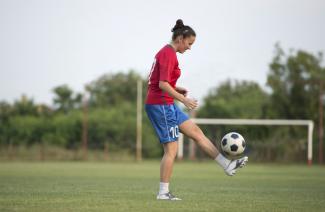
Women have made great strides in sports. And when I say strides, I mean this literally. Up until 1960's Olympics, women weren't allowed to compete in running races over 200 metres in distance. Now, since 2012, they can compete in every Olympic event. However, this race to equality is not a sprint, it's a marathon, and we're still not at the finish line.
Charlotte Edwards, Katy McLean and Kate Richardson-Walsh – these are the names of the female captains who brought their English teams to victory in the highest international cups of their sports. Have you heard of them? Mostly likely not. Yet when I mention names like David Beckham, Andy Murray and Lewis Hamilton, undoubtedly you will know of these sporting legends. So why is that? Because statistically speaking, male sport gets over 90 per cent of all sporting coverage in the UK. With no exposure to women's sport comes no demand and with no demand comes no exposure – it's a vicious circle and seemed to be a never-ending nightmare for female athletes.
However, new initiatives like 'This Girl Can', 'Girls Active' and 'Girls Make Your Move' shed a light on women in sport, who in the past didn't always seem to have the brightest of futures. These campaigns encourage every woman – small, tall, strong, graceful, flexible, sporty and not sporty (yet!) – to get involved in physical exercise and by doing so break stereotypes. Norway has become somewhat of a pioneer in its efforts to demonstrate gender equality in sport. It is playing a whole new ball game with the agreement to pay male and female football players equally. It means one can be a footballer and a feminist as equal play means equal pay.
So next time someone tells you that you throw like a girl, throw it right back at them because this girl can.
Do women's sports get the same attention as men's in your country?
